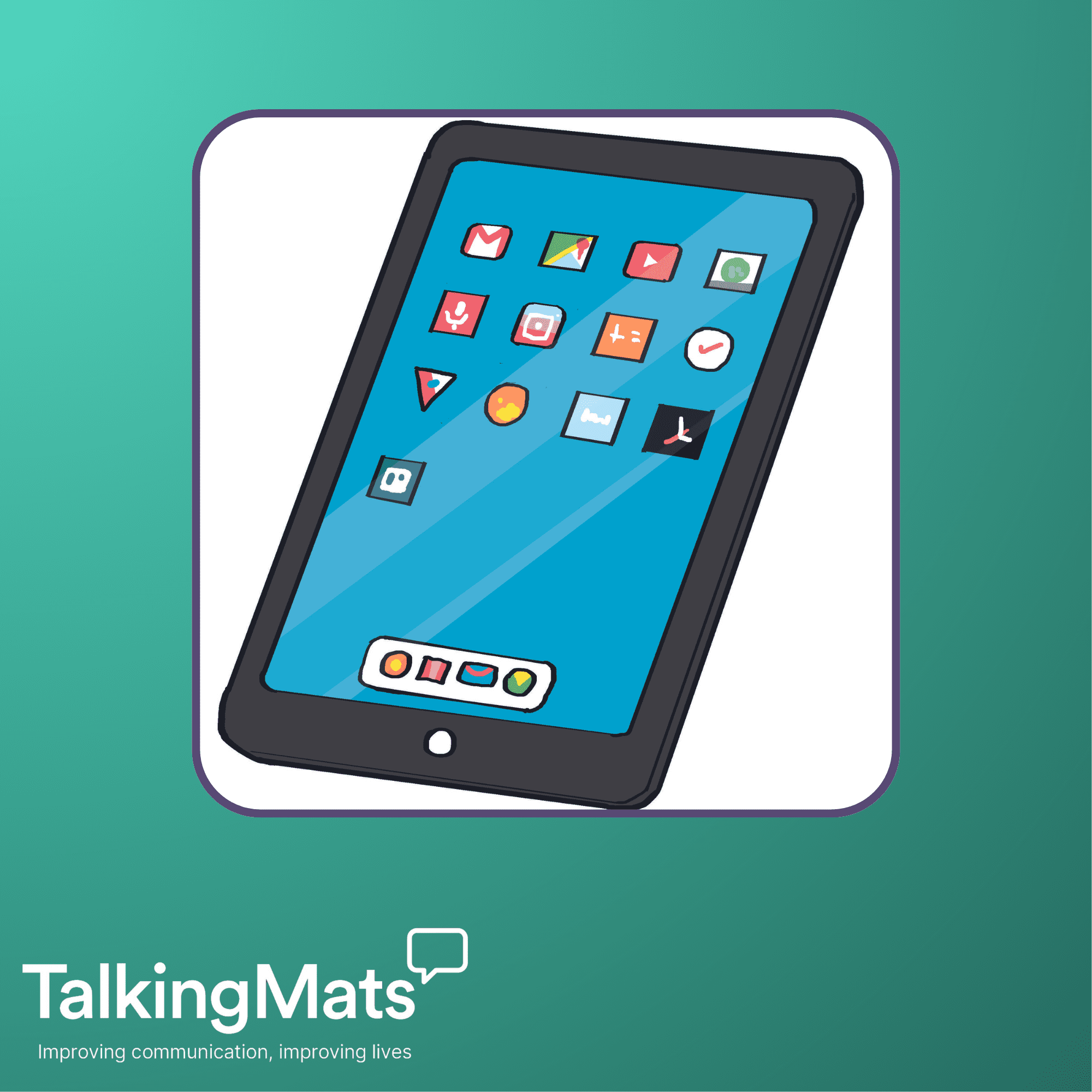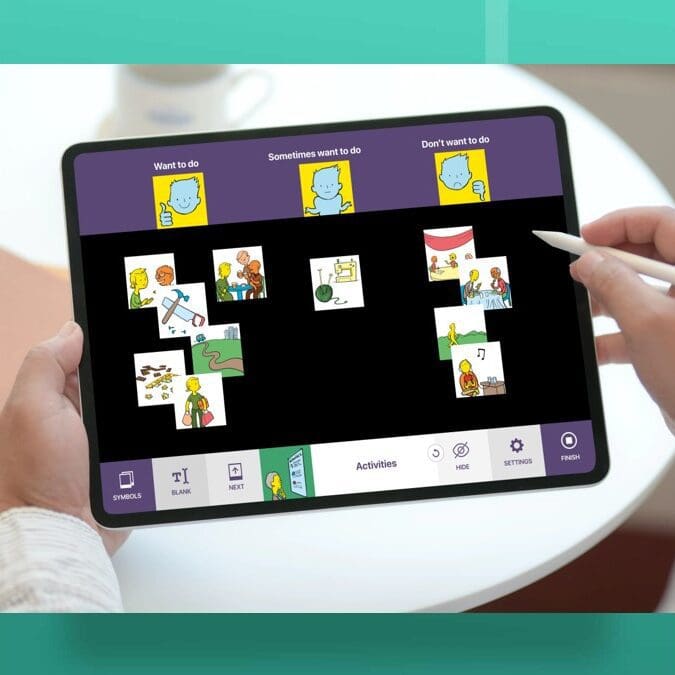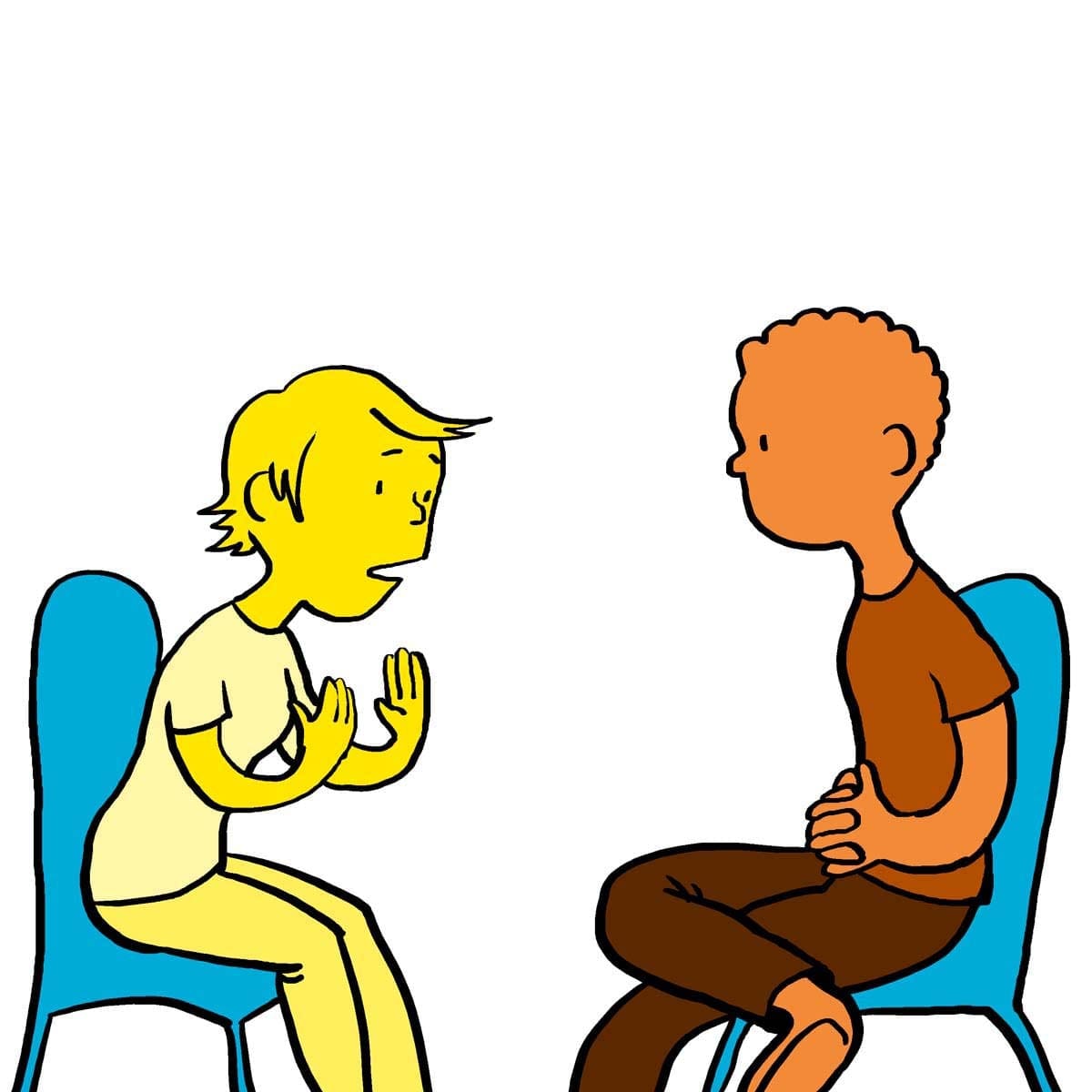
Using Talking Mats to Overcome Language Barriers.
Our thanks for this blog go to Olivia Ince, Talking Mats Licenced Trainer and Speech & Language Therapist. This blog post reflects on the use of a Talking Mat with a Thinker called M who speaks English as an additional language. The Listener in this Talking Mat is Jono Thorne who is a colleague of Olivia. Jono did this Talking Mat for his video as part of a Foundation Training course run by Olivia.
M is a young adult who came to the UK as an unaccompanied asylum-seeking child. M is from a country in Central Africa and speaks a language which is not widely spoken outside of the region. Accessing interpreting and translation services in the UK for their native language is very difficult and M has therefore had difficulties learning English. This means the people around M often have difficulties finding out M’s views, which is why Jono thought a Talking Mat could be an invaluable communication tool for M.
M already uses some visual support, for example hand gestures and using objects such as food items when having a conversation in the kitchen. The people around M are unsure what M’s level of comprehension is in English and therefore they make adaptions such as simplifying their language. M’s expressive language in English is typically the use of one- or two-word utterances and yes/no responses.
To see if M would be able to engage with the Talking Mat process, Jono chose a simple topic to start with and one which he knew would interest M: food. The Top Scale used was like/unsure/ don’t like. Jono noted that M quickly understood the concept of the Talking Mat and the visual element seemed to support M’s understanding. The Talking Mat process including the side-by-side listening also facilitated rapport building.

Jono noticed that M was decisive and seemed certain about their placement of the option cards. The Talking Mat helped M to share their views on a larger number of items than would likely have been possible via a verbal conversation. M also joined in with the recap of their Talking Mat as part of the review and reflect by reading out the Option cards with Jono, which meant M was even more involved with the process.
There were a couple of difficulties for M during the Talking Mat process: the blanks and the option to change where the Option cards were placed. Jono tried to explain these steps using simple language but M did not appear to understand these concepts due to their level of comprehension of English. As M had seemed sure of their initial placement of the Option cards and they joined in with the recap, Jono felt that the Talking Mat was an accurate reflection of M’s views that day. Continuing to model these steps to M will likely help them to develop their understanding of these parts of the Talking Mats process over time.
Jono reflected on how useful it was to now know which foods M likes and doesn’t like. He also reflected on the potential future use of Talking Mats with M on more complex topics and to facilitate participation in decision-making now that it’s clear M understands how a Talking Mat works.
If you are interested in completing Talking Mat Foundation Training, you can read more about it here.
 Online training login
Online training login 






